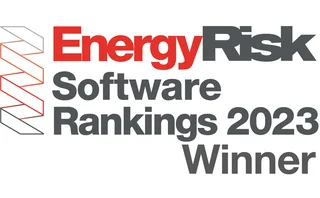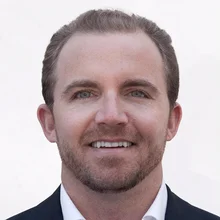
Ensuring energy technology keeps up with the pace of change


Change may well be a constant in energy markets, but its velocity over the past 18 months has been extraordinary. This has seen KWA Analytics’ clients race to ensure their energy trading risk management (ETRM) infrastructure can keep up – and be ready for change yet to come. Richard Page, a director at KWA Analytics in London, Fred Reimer, a director based in New York, and Victor Yu, an executive president at KWA in Houston, discuss the challenges their clients are facing
The war in Ukraine upended energy markets last year. How did your clients’ energy trading risk management systems and processes handle the crisis?

Victor Yu: There was obviously a big increase in the volume of transactions and in volatility, so that meant the timely reporting of exposures and profit and loss became a focal point of what clients needed, as things were so fast-moving. There was also a big shift in activity towards exchanges, partly because it provided a source of liquidity, but also because of credit concerns. The combination of greater volumes on exchange and high, volatile prices substantially increased margin requirements. This, in turn, drove a need among some clients to improve the margining software they were using to manage their on-exchange activities.
The war in Ukraine also served to accelerate the move to renewables, as European countries sought to mitigate their exposure to Russian natural gas, as well as having significant impacts on the liquified natural gas (LNG) markets.
How did client demand for your services evolve in 2022?
Victor Yu: Last year, we really saw the impact of the Covid-19 pandemic fading away. We saw clients renewing their interest in technology transformations and initiatives after the pause the lockdowns had previously imposed. That was starting to happen in the second year of the pandemic, but activity really came back with a vengeance throughout the past year.
We saw activity pick up around system upgrades and extensions to support new business lines – things that clients had put off because of the pandemic. Many clients chose to take advantage of some of the latest market features in the more recent releases provided by ETRM vendors as well.
What projects did the energy crisis generate for KWA?

Richard Page: Given the increased emphasis on renewables, we’re seeing a significant focus and investment in most areas relating to the new energy transition, whether wind or solar, as well as parts of the transition we’ve not necessarily seen so much interest in before, such as batteries and hydrogen.
Where traditional ETRM systems are in place, there has to be some augmentation of architecture and landscape to cope with the new types of contracts involved. Newer versions of ETRM systems will have introduced some functionality to incorporate new energy technologies but, even here, we’re seeing the need for some system development. For example, the key challenge clients are seeing from a front-office perspective is the gap between the accuracy of the wind and solar forecasts they are getting and the actual generation, and what they can do to improve that.
Victor Yu: These assets don’t behave the same way as a traditional baseload or peaking power plant. The output is variable and dependent on the forces of nature, and there are lots of challenges with new energy sources that ETRM systems need to manage. There is a large amount of data that comes in from the facilities, and optimisations that have to be done to it – that’s a challenge ETRM systems need to be able to manage.
“Our people are our most important assets. We’ve been able to attract and retain talent because we think long term. We put our people first and we offer cutting-edge projects to work on. They are excited to be part of a team that is continuing to grow substantially year-on-year”
Fred Reimer, KWA Analytics
What projects are you most proud of?
Fred Reimer: At KWA, we’ve been at the forefront of LNG trading risk management technology and have been heavily involved with the leading firms in that market. Recently, we have helped with solutions that handle the complex optionality in the market, and of the scenario analysis that is involved. For example, we worked with one of the major firms to improve the efficiency and scalability of its LNG portfolio optimisation process by moving its analytics from spreadsheets to the next-generation quant platform.

The most challenging part of the process was ensuring the new system accurately reflected the complex portfolio optimisation models used by the client. This required extensive testing and validation to ensure the results generated by the new system were comparable to or better than those generated by the old spreadsheet-based system.
Richard Page: On the new energy side of the market, we undertook a major project to combine and harmonise an oil major’s worldwide voluntary carbon-offset businesses, under a single system. We assessed the viability and effort of bringing together the various globally dispersed source systems and the target ETRM system, then developed a data migration and transaction reconciliation strategy.
It was a challenge to manage conflicting priorities between the various businesses and regions, requiring the alignment of more than 20 functional areas while balancing their availability across time zones. This level of client service and project delivery would not have been possible without the outstanding team of consultants we have been able to gather into a single organisation.
With another very successful year in Energy Risk’s software rankings, to what do you attribute your success?
Fred Reimer: Our people are our most important assets. We’ve been able to attract and, more importantly, retain talent because we think long term. We put our people first and offer them cutting-edge projects to work on. They are excited to be part of a team that is continuing to grow substantially year‑on‑year – with numbers up 58% in 2022.
It’s also very important to be able to keep up with trends in the market, such as those around the energy transition, to understand our clients’ needs, and to have the expertise, tools and resources to be able to respond to clients very quickly. You need to be able to provide fresh insights into the issues they are encountering.
Richard Page: It helps that we have very long-term relationships with many of our clients. They know they can turn to us when the business raises a new requirement, such as onboarding new markets or implementing additional modules of their ETRM system. They turn to KWA because we’ve been able to build trust and show an ability to deliver.
Fred Reimer: There are a couple of things that have helped differentiate KWA from our competitors. Over the past 12–18 months, we’ve been very successful in adding to the depth of our data analytics and quantitative risk expert team. We have undertaken a number of projects to implement more advanced risk analytics for our clients, both within energy and commodities and also in the capital markets space. It’s an area in which we already had great credentials, but adding that depth to our team – from a business and technology perspective – has been a big differentiator.
We also have a wide range of experience across delivery of off-the-shelf third‑party solutions, in-house builds and hybrid solutions. We’ve done all three of these things a number of times and, as a result of our delivery experience, we’re being asked to provide advisory guidance about why a client might want to do one versus the other.
How are you developing the business at KWA? Are there new areas of activity you are moving into?
Fred Reimer: Providing client value and satisfaction is always important, as well as being a good strategic partner in support of our clients as their businesses grow from advisory to delivery, then to managed services. Being a global organisation, when clients expand operations to other regions, we tend to have a presence there to support them. On that global theme, we continue to expand our offshore and nearshore development and delivery capabilities. A discovery from the pandemic was the importance our clients place on having access to a flexible, worldwide resourcing pool to support their business resiliency and continuity.
Victor Yu: We are also focused on being at the forefront of understanding the new, innovative technologies that are out there to support our ETRM clients. We continue to keep a close eye on opportunities and trends relating to new trading and risk solutions, platform re-engineering, artificial intelligence (AI), machine learning, large language models, data analytics and automation.
What is your outlook for 2023 and beyond? How do you see client demands evolving?
Victor Yu: Volatility is here to stay for a while. I think we all realise that. That’s for myriad reasons, including the energy transition and how trade flows have changed in traditional energy and commodity markets as a result of the Ukraine/Russia conflict. There’s a lot of ‘new’ out there that the industry is going to need to adapt to. ETRM platforms are going to have to evolve to help manage those risks and be able to scale up very quickly, to keep pace with the business. Clients need to have the proper platform in place to be able to support rapid growth and redeployment.
Richard Page: One example we’re seeing is in battery storage and its key role in smoothing overproduction of renewables and supplying capacity in times of underproduction. Only a short time ago, batteries were very small scale, with low megawatt capability. It’s accelerating very quickly, and we’re already seeing much higher-capacity batteries across Europe. Companies are looking to invest in the technology and ensure it can be integrated into the systems they need to support it.
What should clients be thinking about that they aren’t? What commodity trading and risk management (CTRM) issues should firms be thinking about?
Fred Reimer: The events of the past several years have shown us that the only predictable thing is change. On the business side, the energy transition continues to move forward and even accelerate, new markets are evolving and there is this ongoing backdrop of energy and commodities market volatility.
On the technology side, there is a lot of innovation happening and, consequently, a lot of great solution options are coming from the smaller up-and-coming vendors as well as the larger, established players. This gives clients much more flexibility in determining which path to choose, making it more of a ‘build-versus-buy platform/build hybrid’ decision. Add to this the potential for machine learning and AI, continued migration to the cloud, advances in edge‑to‑cloud computing and big data, and cyber security concerns.
Between the business drivers and technology advances, there is significant information for clients to gather and assess. This is in addition to the usual considerations such as system scalability/flexibility, regulatory compliance, security, analytics, vendor support and road maps.
Every client has unique requirements and it is easy to get overwhelmed with the analysis. For clients looking at E/CTRM solutions, there is no substitute for doing your homework and seeking expert advice if needed. Good solutions are expensive, and clients will have to live with these systems for many years, so it’s important to conduct a thorough assessment and have a practical, achievable approach to delivering these solutions for stakeholders.
See the full Energy Risk Software Rankings 2023 results
Sponsored content
Copyright Infopro Digital Limited. All rights reserved.
As outlined in our terms and conditions, https://www.infopro-digital.com/terms-and-conditions/subscriptions/ (point 2.4), printing is limited to a single copy.
If you would like to purchase additional rights please email info@risk.net
Copyright Infopro Digital Limited. All rights reserved.
You may share this content using our article tools. As outlined in our terms and conditions, https://www.infopro-digital.com/terms-and-conditions/subscriptions/ (clause 2.4), an Authorised User may only make one copy of the materials for their own personal use. You must also comply with the restrictions in clause 2.5.
If you would like to purchase additional rights please email info@risk.net